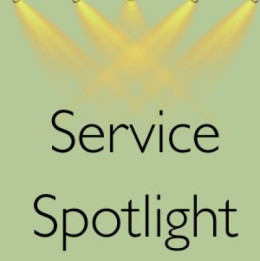Posted On: December 11, 2020 by Community HealthCare System in: Community health news

The surge in COVID-19 cases in Kansas has been well documented in the news, and many have heard about full hospitals in Topeka, Wichita, and Kansas City. But rural hospitals are feeling the pinch, too. In northeast Kansas, Community HealthCare System hospitals and clinics have felt the impact, sometimes in ways that are not readily visible to the public.
Testing increasing numbers of patients for COVID-19, experiencing busy emergency rooms, and admitting more COVID-19 patients to the hospital have been expected. Extensive planning and problem-solving since before the beginning of the pandemic have meant that Community HealthCare System, or CHCS, has supplies and procedures in place to handle the surge. According to CEO Todd Willert, the more difficult effects are related to staffing, the inability to transfer patients to a higher level of care when necessary, and the long period of stress healthcare workers have experienced.
“Unchecked community spread of COVID-19 has meant that many of our associates have become sick or have been exposed to COVID-19 and had to quarantine, and that has caused staffing shortages that have been difficult to manage at times,” Willert said.
Willert noted that because healthcare workers wear proper masks, eye protection, and other personal protective equipment, their exposures occur outside the healthcare environment.
“We are grateful to those in our communities who have taken the responsibility to adopt safety measures to help alleviate the pandemic, because slowing the spread helps us keep our associates healthy and able to care for patients,” Willert said.
Another major impact on CHCS has been worry and difficulty associated with a task that is normally routine: Transferring patients who need a higher level of care to a larger hospital. CHCS hospitals in Onaga and St. Marys typically send patients with heart attack, stroke, or other conditions that require intensive care or treatment by specialists to hospitals in Topeka, Manhattan, or Kansas City after patients are stabilized. Lately, those hospitals have had overflowing COVID-19 floors and intensive care units, or ICUs, and face their own staffing difficulties because of COVID-19. That means they have been unable to accept transfers.
“Our care team works hard to meet the needs of the patients with well trained nurses and providers. We are a Level IV Trauma Center, which requires additional training and education, but meeting the needs of patients that require ICU care and not having a place for them to go is stressful for the staff and providers,” said Mindy Olberding, RN and chief nursing officer at CHCS.
According to Olberding, because CHCS is a Critical Access Hospital, it normally transfers patients who require a longer stay and more acute care services.
“We do not provide this level of care routinely, and as the number of patients in our hospitals increases, providing one-on-one care makes it more difficult to meet all patient needs with the staff we have,” Olberding said.
Because hospitals are so full, larger facilities have taken the unusual step of transferring some patients back to CHCS.
“We have taken six patients in the last few weeks to help free up beds for patients who require a higher level of care. We are able to care for patients from our area who are recovering from COVID-19, for example, but who do not require intensive care and just need to gather more strength, and that helps relieve some pressure on Stormont Vail in Topeka,” Olberding said.
A new Mission Control system that the state is rolling out should help with transfer problems. Olberding noted that patients in some locations have had to wait many hours for transfer or have had to be sent out of state.
“We’ve heard many stories from other facilities. We’ve been lucky here, for the most part, but we know transfers have been very difficult for several weeks now. We do not want to get into a situation where we have someone who urgently needs higher-level trauma care because of a car accident or care for a stroke, for example, and we can’t get the patient a bed,” Olberding said.
Ongoing stress and heightened levels of preparation also take a toll on healthcare staff.
“We’ve been operating in uncertainty for nearly 9 months now, and it’s wearing on everyone,” Willert said.
Working long hours with little relief because of staffing shortages, the necessity of maintaining strict protocols to protect both workers and patients, and the looming stress of the need for constant problem-solving has healthcare workers feeling spent.
“Between staffing shortages due to quarantines and increased testing within our communities, our providers and nurses are feeling the strain at times. Treatment guidelines, resources, and recommendations from our state and local health officials are constantly changing, which adds more challenges,” said Merica Surdez, chief of provider and clinic operations at CHCS.
Surdez noted that CHCS clinics offer rapid antigen testing and confirmatory PCR testing, which helps providers and patients achieve quicker results, shortened quarantines, and decreased transmission of the virus. She said that teamwork and dedication to providing the highest quality of care to patients is getting staff through difficult days.
“I’m fortunate to work with some of the best healthcare professionals in Northeast Kansas. We’ve learned during this pandemic that things can change quickly. We take each day one at a time and are working together to reach the end,” Surdez said.
Willert said vaccines for COVID-19 are a light at the end of the tunnel.
“We will be prepared to receive vaccine doses when they are available, and we are plugged in to the state’s plans for distribution,” Willert said.
The vaccine distribution process is highly complex and has required reams of paperwork. Information has changed often, and many more hours of meetings and planning will be required to administer the vaccine, but Willert said it will be worth it.
“We are ready to see the end of this pandemic. We’re thankful for the research and effort that has gone into the development of the vaccine, and we look forward to protecting our communities,” Willert said.
Photo caption: Onaga Nurse Manager Lacey Niehues speaks with Bailey Tucker, RN and charge nurse (seated) and Cheryl Bailey, RN, at the nurses station. "At a critical access hospital, our nurses wear many hats: they are ER nurse, the floor nurse, the outpatient nurse, and sometimes assist other ancillary departments in providing care. We try and guess how many potential patients we will get, what's going on around us, and will staff be able to work due to exposure or illness," Niehues said. Keeping critical patients challenges normal staffing ratios. "One critical patient could take away staff from caring for our other patients. Our nurses work hard and come in on their days off to continue to take care of our community. Their teamwork and dedication to our organization is admirable," Niehues said.










-
View AllJoyce Daneke | Dec 11th 2020 @ 8:18 PM
It is unimaginable to me what these folks are going through. And unrelating. I am sure that those that require hospitalization are a percentage of those suffering of which many should be in the hospital as well. I wear my mask, I keep my distance and I wash my hands. I also hold my hands in prayer every night.